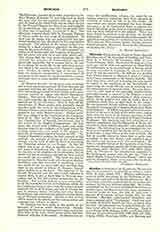

Mondino (a diminutive for RAIMONDO; MUNDINUS) DEI LUCCI, anatomist, b. probably at Bologna, about 1275; d. there, about 1327. Mondino performed a series of public dissections at the University of Bologna in the early part of the fourteenth century. He is sometimes said to have performed only two or three dissections, but his own writings refute this. He is often proclaimed the first to have performed dissections in modern times, but Haeser says that many anatomists dissected before his time, and that we have even a manual of dissection written before this, by one Ricardus. Mondino systematized dissection, and wrote a manual called “Anathomia”, which was used in nearly all medical schools for three centuries after his time. Its popularity can be judged from the editions issued after the invention of printing. There is one at Pavia (1478), Bologna (1482), and Padua(1484); there are Venice editions of 1494, 1498, 1500, and 1507; Leipzig (1505), Strasburg (1509), and Marburg and Lyons shortly afterwards. His book was considered such an authority that an old teacher declared that medical students for centuries worshipped him as a god. If something found in a dissection were not described in Mondino’s “Anathomia”, constantly open before them while dissecting, it was considered an anomaly. The work of course has been superseded by progress in the science of anatomy, but it is easy to understand from it how much practical anatomy for surgical purposes the medieval physicians were taught.
JAMES J. WALSH

